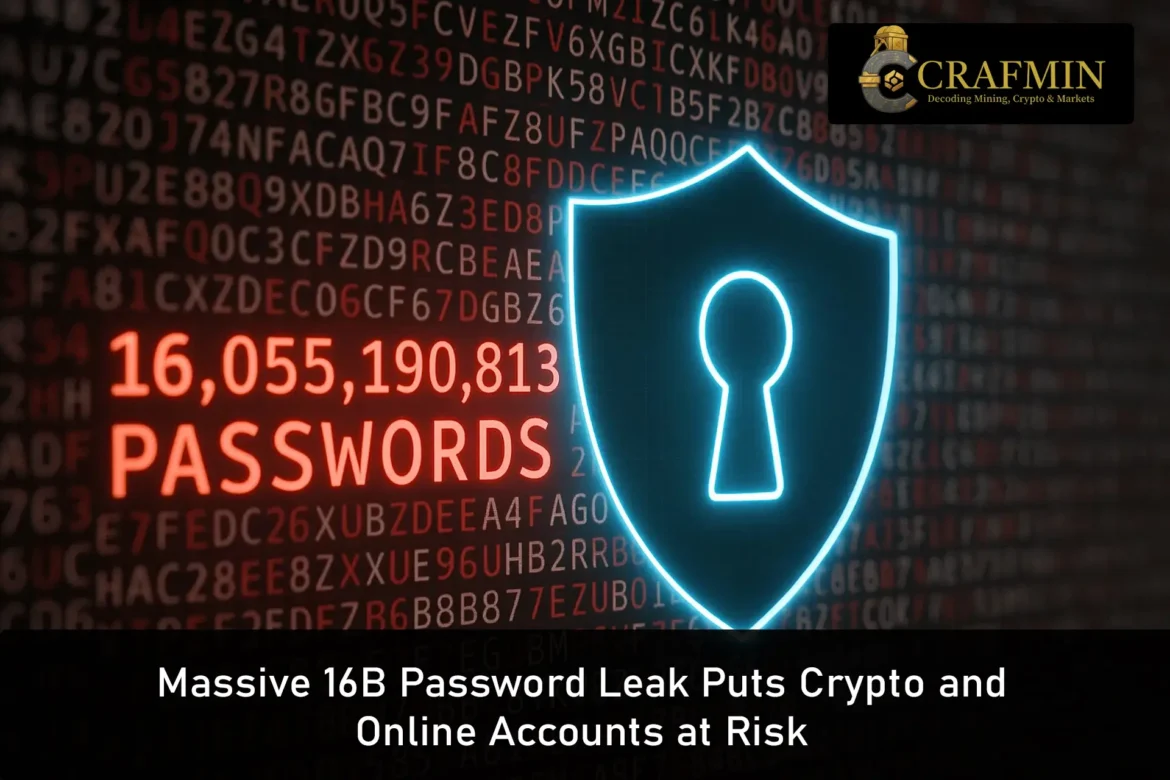Enormous Password Leak Rattles Crypto Community
A massive spill of over 16 billion usernames and passwords has sent shockwaves through the digital space, setting off alarm bells across the crypto world. This isn’t yesterday’s news—these credentials are fresh as daisies and span heavyweight services like Apple, Google, Facebook, Telegram, GitHub, and even some government platforms. If you’ve been rehashing the same password across accounts, this is your wake-up call.
Cybernews, a cybersecurity research outfit, uncovered 30 massive datasets packed with login details. Some files contain in excess of 3.5 billion entries, while the smallest dataset still housed a hefty 16 million. On average, each collection holds around 550 million credentials. All up, that’s a staggering 16 billion records laying bare.

Image 1 (Source: Forbes)
Treasure Trove for Cybercriminals
Most data was found on misconfigured Elasticsearch servers and unsecured cloud storage—basically left with the front door swinging wide open. These datasets don’t just contain login names and passwords. They also include session cookies, authentication tokens, and metadata like device or login timestamps. That combo hands cyber crooks a fast lane into your online life.
A big reason this leak is so dangerous is password reuse. Many users rely on the same password for multiple services—think email, social media, banking, and crypto accounts. Once a hacker bags one set, they’re off to the races, trying that combo everywhere in a tactic called credential stuffing. Without two-factor authentication, your accounts are as exposed as an open mic night.
Impact on Crypto Users
Analysts are warning that the crypto industry is particularly vulnerable. Many wallets use email-based logins or cloud backups of their seed phrases. If crooks get hold of those credentials, they could rummage through your cloud storage looking for private keys. The worst-case scenario? Crypto assets vanishing faster than you can say “blockchain.”
Exchanges and custodial services may soon start urging users to reset passwords or take stern action to safeguard assets. The leak is a stark reminder of why weak security practices are a real liability.
Who’s Behind the Leak?
It’s still unclear who compiled these gigantic datasets. Cybernews suggests some of them likely originate from organised cybercriminal rings. Others could be collections by security researchers keeping tabs on emerging threats.
Regardless of their origin, the fact the data was abandoned on unsecured servers reveals a colossal oversight—like leaving your valuables lying around.
What’s in the Dumps?
Each record typically features the website address alongside the username or email plus the password. Some datasets go a step further, storing digital tokens that keep you logged in, and metadata that helps attackers fingerprint your device.
This gives bad actors a working blueprint to break into accounts, launch phishing operations, mount ransomware attacks, or perpetrate business email compromise.
Because some datasets are more recent, the information is ready for cybercriminals to use now—not months or years old.
Actually 16+ characters and passphrases are even better !! #cybersecurityawareness #cybersecuritytips #cybersec #cybersecurity #SecurityAlert #Awareness #CryptoNews #cryptocurrency #crypto #artificial_intelligence #infosec pic.twitter.com/lY6AvLKy9y
— BBs_CyberSecurity Awareness (@Cyber_Info_BB) June 19, 2025
How to Batten Down the Hatches
While you can’t unring the bell, you can shield yourself:
- Change your passwords on all critical services—email, banking, crypto exchanges. Steer clear of reusing old ones.
- Enable two-factor authentication (2FA). A second verification step, like a text or app-generated code, adds a strong layer of defence.
- Never store seed phrases or private keys in cloud platforms. Keep them offline and under your control, ideally on paper or secure hardware.
- Check if your email has been compromised using reputable breach-checking services like Have I Been Pwned.
- Scan your devices for malware or infostealer threats—these trojans are often the ones feeding big leaks.

Image 2: (Source: Adobe Stock)
Bigger Picture: Data Hoarding Risks
This breach highlights a broader problem: organisations hoard data irresponsibly. When tons of info sit on poorly secured servers, it’s ripe for the picking. It’s like locking the stable door after the horse has bolted—securing data must be top of mind before disaster strikes.
Read also: Bitcoin’s Path to $150K Hinges on Market Liquidity
Past mega-leaks show this isn’t a one-off. The RockYou2024 breach involved around 10 billion credentials, and the 2024 Mother of All Breaches (MOAB) uncovered 26 billion records. These massive dumps keep chipping away at the line between private and compromised data.

